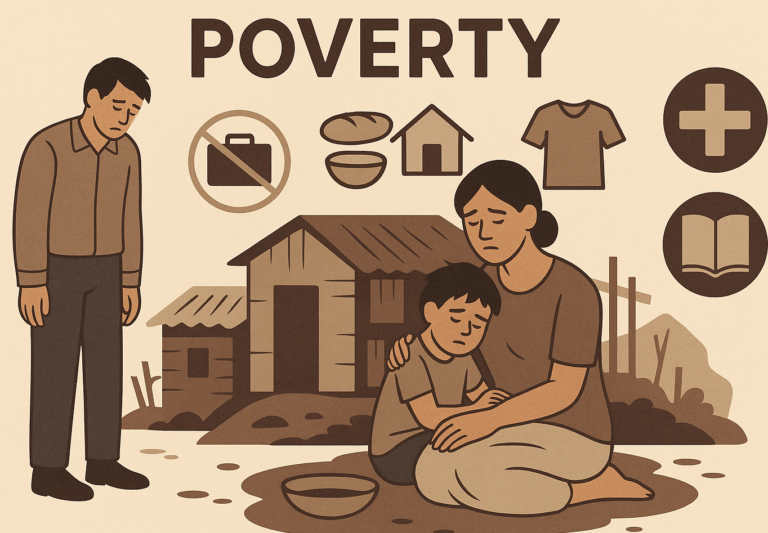What are Micro, Small, and Medium Enterprises (MSMEs)?
Micro, Small, and Medium Enterprises (MSMEs) are businesses that are classified based on their size, specifically looking at things like annual turnover (sales), investment in machinery, and the number of employees. These businesses are divided into three categories:
- Micro Enterprises:
- These are the smallest businesses, often with fewer than 10 employees and a low turnover (less than ₹5 crore in India).
- Examples: Small local shops, family-run businesses, or home-based businesses.
- Small Enterprises:
- These businesses are a bit larger than micro-enterprises, with 10 to 50 employees and a turnover between ₹5 crore to ₹75 crore.
- Examples: Small factories, local manufacturing units, or shops with several employees.
- Medium Enterprises:
- These businesses are larger, with 50 to 250 employees and a turnover between ₹75 crore to ₹250 crore.
- Examples: Bigger factories, regional chains, or medium-sized service providers.

Why are MSMEs Important for India’s Economy?
MSMEs play a crucial role in India’s economy for several reasons. Here’s how:
1. Job Creation
- MSMEs are a huge source of employment in India. They provide jobs to millions of people, especially in rural and semi-urban areas.
- Around 40% of India’s total employment comes from MSMEs. These businesses employ a wide variety of workers, from skilled labor to unskilled workers.
- They are crucial in providing local jobs, reducing migration from rural areas to cities.
2. Contribution to GDP
- MSMEs contribute about 30% to India’s Gross Domestic Product (GDP). This means they play a big part in driving the country’s economic growth.
- While large industries get the most attention, MSMEs are the backbone of the economy, providing goods and services that cater to both domestic and international markets.
3. Exports
- MSMEs also contribute significantly to India’s exports, especially in sectors like textiles, handicrafts, food products, and leather.
- Small and medium enterprises often cater to niche markets (specialized products) and have a strong presence in international trade.
4. Boosting Innovation
- MSMEs are often more flexible and innovative compared to larger firms. They can adapt quickly to market changes and consumer preferences.
- Many innovations and new products come from MSMEs because they are willing to take risks and experiment in specialized areas.
5. Economic Diversification
- MSMEs help diversify India’s economy by producing a wide range of goods, from handicrafts to electronics to services.
- This diversity helps ensure that India is not overly dependent on one or two industries, making the economy more stable and resilient.
6. Regional Development
- MSMEs are spread across the country, including in smaller towns and rural areas. This helps promote regional development and reduces income inequality between urban and rural areas.
- By establishing businesses in less-developed areas, MSMEs help improve local infrastructure and provide economic opportunities where they are needed the most.
Role of MSMEs in Different Sectors
- Manufacturing Sector:
- Many small and medium businesses are involved in manufacturing various products, such as clothing, machinery, food products, and more.
- India’s textile industry, for example, has a large number of MSMEs that manufacture fabrics, garments, and home textiles, contributing significantly to exports and employment.
- Services Sector:
- MSMEs are also major players in the services industry. This includes sectors like tourism, hospitality, education, healthcare, and IT services.
- Small businesses provide essential services such as transport, consulting, repairing, and food services.
- Agriculture and Rural Development:
- Many MSMEs are involved in agriculture-related businesses, like producing agricultural tools, processing food, or providing services to farmers.
- This contributes to rural development by increasing farm productivity and reducing wastage of agricultural products.
How Do MSMEs Help in Economic Growth?
- Financial Inclusion
- MSMEs contribute to financial inclusion by providing opportunities for people in rural or underserved areas to earn a living.
- By supporting local businesses, they help increase economic participation and empower individuals, especially women and young entrepreneurs.
- Empowerment of Women and Minorities
- MSMEs provide significant employment opportunities for women and minorities. Many women run small-scale businesses, such as in the handicraft or food production sectors.
- These businesses help women gain financial independence and contribute to community development.
- Supporting Large Industries
- MSMEs often act as suppliers or support services for large companies. For instance, they might supply parts, raw materials, or components to big industries like automobile manufacturing, electronics, and construction.
- This relationship supports both the MSMEs and the larger industries, creating a stronger supply chain.
Challenges Faced by MSMEs in India
While MSMEs are vital for India’s economy, they also face several challenges:
- Access to Finance
- One of the biggest challenges for MSMEs is getting loans or financing. Small businesses often have limited access to banks or financial institutions, making it harder to grow or expand.
- Lack of collateral, high interest rates, and complex loan procedures can make it tough for MSMEs to secure funding.
- Lack of Technology and Innovation
- Many MSMEs still rely on traditional methods of production, which can be inefficient. They may not have access to the latest technologies, making it harder to compete with larger firms or increase productivity.
- Regulatory Challenges
- The complex and changing regulations in areas like taxation, labor laws, and licenses can be overwhelming for small business owners.
- MSMEs often struggle to comply with these rules, which increases their costs and reduces their ability to grow.
- Market Access
- Small businesses often face difficulty in reaching larger markets, especially outside their local area. Without the resources to advertise or build a strong brand, MSMEs can struggle to expand their customer base.
- Competition from Large Corporations
- MSMEs are often outcompeted by large corporations that can offer products at lower prices due to economies of scale or more advanced technology.
Government Support for MSMEs
To support MSMEs, the Indian government has introduced several measures:
- Financial Assistance: The government provides schemes like MUDRA loans (Micro Units Development and Refinance Agency) and subsidies to make loans more accessible.
- Technology Support: There are programs to help MSMEs adopt new technologies and improve productivity, such as the Technology Upgradation Fund Scheme (TUFS).
- Skill Development: The government has set up initiatives like Skill India to provide training for workers and entrepreneurs to help them improve their skills.
- MSME Policy: The government has created policies to ease the regulatory burden and provide market access through initiatives like Make in India and Digital MSME.
Conclusion
Micro, Small, and Medium Enterprises (MSMEs) are crucial for India’s economic growth. They create jobs, contribute significantly to the GDP, drive exports, and help in regional development. They also empower people, particularly in rural areas and among marginalized groups. However, they face challenges like limited access to finance, technology, and market competition.
To ensure MSMEs continue to grow and thrive, India needs to provide better financial support, technology access, and a more business-friendly environment. When MSMEs succeed, they contribute not only to India’s economy but also to the prosperity of its people.











